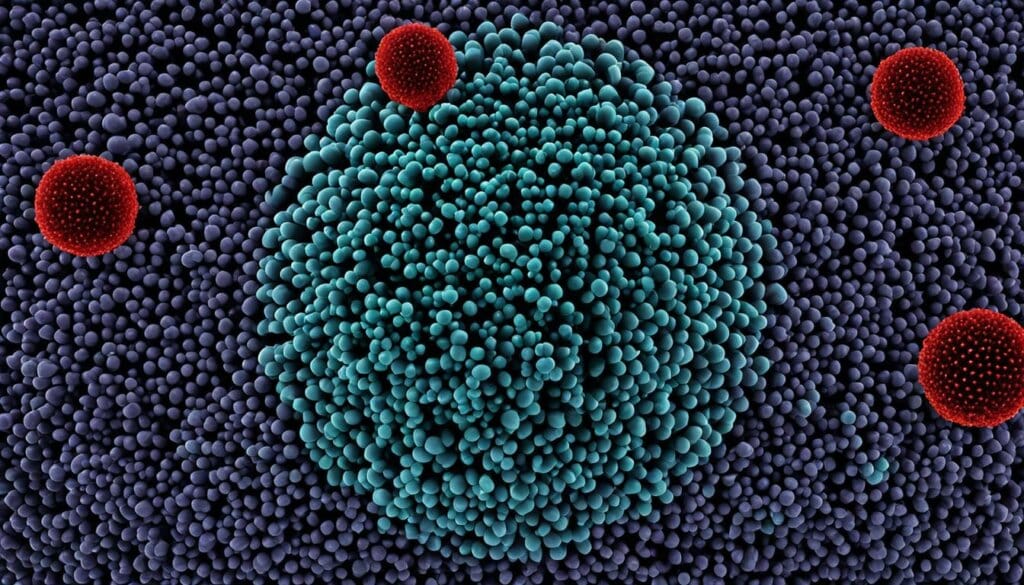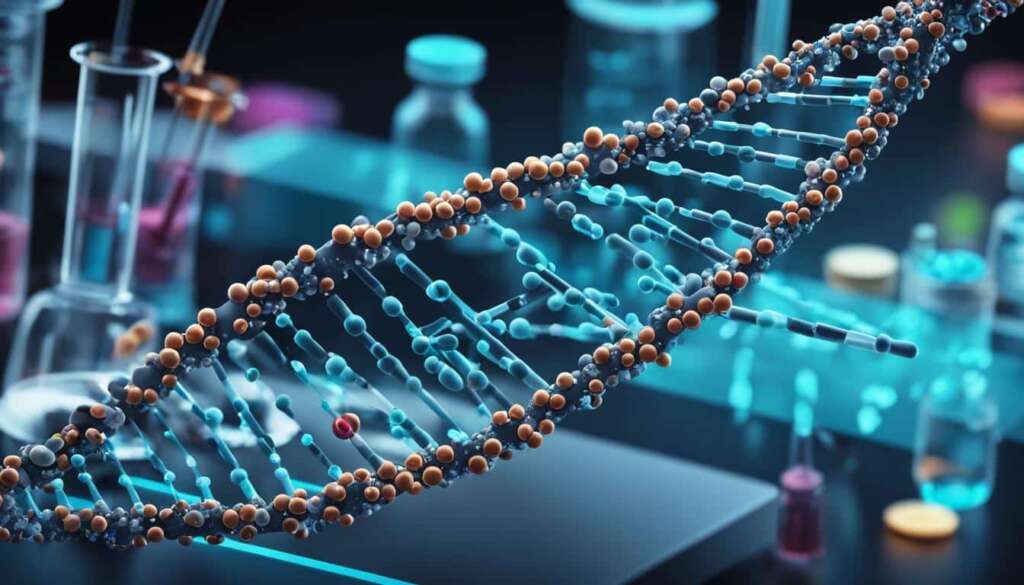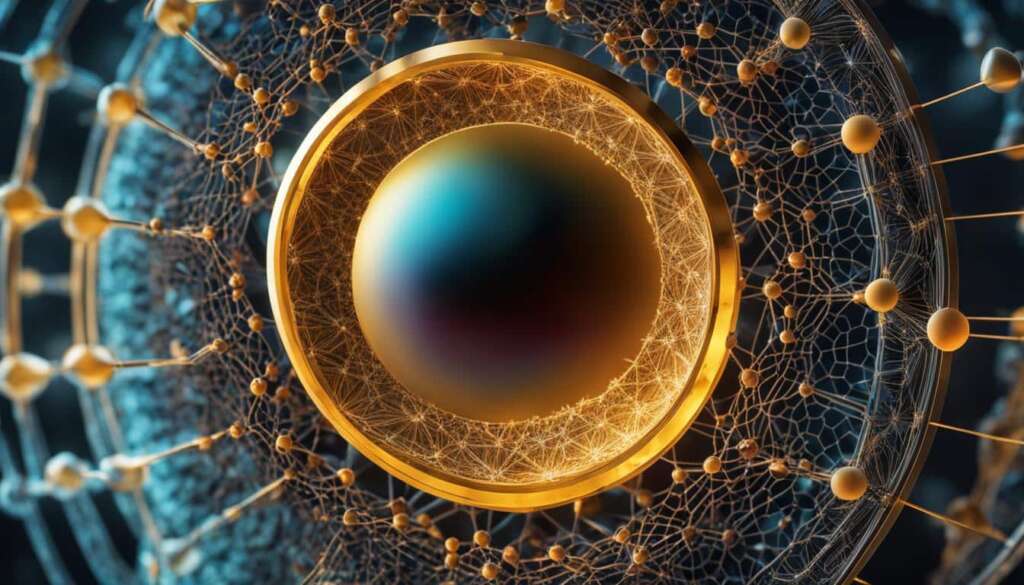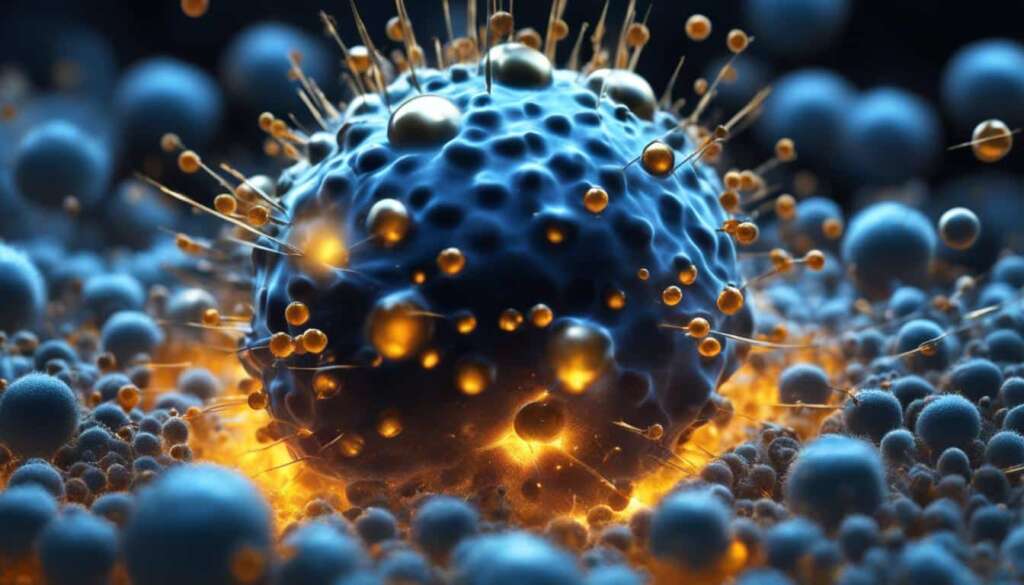Table of Contents
Nanotechnology is a rapidly advancing field that involves manipulating and controlling matter at the nanoscale level. It has numerous applications in various industries, including medicine, electronics, energy, and materials science. This article aims to provide a simplified and concise overview of nanotechnology, highlighting its key concepts, advancements, and potential impact.
Key Takeaways:
- Nanotechnology involves manipulating matter at the nanoscale level.
- It has applications in medicine, electronics, energy, and materials science.
- Nanoparticles are used in targeted drug delivery and imaging in medicine.
- Nanoscale materials revolutionize the electronics industry.
- Nanotechnology plays a crucial role in advancing renewable energy technologies.
What is Nanotechnology?
Nanotechnology refers to the study and manipulation of matter at the nanoscale, which is about 1 to 100 nanometers in size. At this scale, the properties of materials can significantly differ from their larger-scale counterparts, leading to unique phenomena and applications. Nanotechnology encompasses various fields, including physics, chemistry, materials science, and biology.
In nanotechnology, scientists and engineers work with materials and structures that are incredibly small, allowing them to control matter on an atomic and molecular level. By manipulating materials at the nanoscale, researchers can create new materials with enhanced properties or modify existing materials to exhibit improved performance.
Nanotechnology has the potential to revolutionize many industries by enabling the development of new technologies, devices, and systems. It has already had an impact in fields such as medicine, electronics, energy, and materials science, where nanoscale materials and structures have been incorporated into various applications.
The unique properties exhibited by nanoscale materials stem from the fact that they have a high surface-to-volume ratio, allowing for enhanced reactivity and properties. For example, nanoparticles can exhibit different optical, electrical, and mechanical properties compared to bulk materials, making them suitable for a wide range of applications.
To further illustrate the significance of nanotechnology, here are a few examples of how it is being used in different fields:
“Nanotechnology has revolutionized the field of medicine. Nanoparticles can be designed to deliver drugs directly to diseased cells, reducing side effects and improving treatment efficacy. Nanosensors can detect disease markers with high sensitivity, enabling early diagnosis. Nanomaterials can also be used for tissue engineering, regenerative medicine, and targeted cancer therapy.”
“In electronics, nanoscale materials have revolutionized the development of smaller and more efficient devices. Nanotechnology enables the production of nanoscale transistors, enhancing the speed and energy efficiency of computers and other electronic devices. Nanomaterials, such as graphene, have excellent electrical conductivity and can be used in flexible displays and wearable electronics.
To provide a visual representation of the nanoscale, below is an image highlighting the size difference between a nanoscale object and a human hair:
Nanotechnology is a multidisciplinary field that combines principles and techniques from various scientific disciplines. By understanding and harnessing the unique properties of materials at the nanoscale, researchers can unlock new possibilities that have the potential to transform industries and improve our quality of life.
Applications of Nanotechnology
Nanotechnology has revolutionized various industries through its wide range of applications. This section will explore how nanotechnology is making significant advancements in medicine, electronics, energy, and materials science.
Nanotechnology in Medicine
In the field of medicine, nanotechnology offers exciting possibilities for targeted drug delivery and imaging. Nanoparticles, such as liposomes and polymeric nanoparticles, can be engineered to carry drugs directly to diseased cells, increasing treatment effectiveness while minimizing side effects. Additionally, these nanoparticles can act as contrast agents in medical imaging, allowing for more accurate diagnostics and monitoring.
Nanotechnology in medicine has also given rise to the development of nanosensors. These tiny devices can detect disease markers with high sensitivity, enabling early diagnosis and intervention. Furthermore, nanomaterials are being utilized in tissue engineering and regenerative medicine to create scaffolds and matrices that promote cellular growth and regeneration.

Nanotechnology in Electronics
The electronics industry has greatly benefited from nanotechnology advancements. Nanoscale materials, such as carbon nanotubes and nanowires, have enabled the creation of smaller, faster, and more efficient electronic devices. Transistors made from these nanomaterials offer improved performance, with the potential for even larger gains as researchers continue to refine their fabrication processes.
Nanotechnology has also paved the way for flexible electronics and wearable devices. Materials like graphene, with their exceptional electrical conductivity and flexibility, are being incorporated into displays, sensors, and energy storage components. This integration of nanomaterials in electronics is driving innovation and pushing the boundaries of what is possible in terms of device design and functionality.
Nanotechnology in Energy
The energy sector has witnessed significant advancements through the use of nanotechnology. Nanomaterials have the potential to improve the efficiency of solar cells by enhancing light absorption and charge transport. By incorporating nanoparticles into the design of solar panels, researchers can increase the conversion of sunlight into electricity, thereby making solar energy more accessible and cost-effective.
Nanotechnology is also being applied in energy storage devices like batteries and supercapacitors. Nanoparticles, such as titanium dioxide and lithium iron phosphate, are being used to improve battery performance, including capacity, charging speed, and lifespan. Additionally, nanotechnology plays a crucial role in developing more efficient fuel cells and catalytic converters for clean energy production.
Nanotechnology in Materials Science
The field of materials science has been revolutionized by nanotechnology, enabling the creation of new materials with enhanced properties. Nanomaterials, such as carbon nanotubes and nanoparticles, exhibit remarkable strength, durability, and conductivity due to their unique structures and surface characteristics.
Nanotechnology has also led to the development of nanocomposites, which combine nanoscale fillers and a matrix material to create materials with superior properties. These nanocomposites are used in a wide range of applications, from aerospace to automotive industries, where their enhanced strength, thermal stability, and electrical conductivity provide significant advantages.
| Nanotechnology Applications in Different Fields | |||
|---|---|---|---|
| Medicine | Targeted drug delivery | Imaging | |
| Electronics | Faster and more efficient devices | Flexible displays | Wearable electronics |
| Energy | Improved solar cells | Enhanced batteries | Energy storage |
| Materials Science | Enhanced strength | Durability | Conductivity |
Nanotechnology in Medicine
Nanotechnology has revolutionized the field of medicine, with its potential to significantly improve patient outcomes and transform the way we diagnose and treat diseases. By harnessing the power of nanoparticles and nanomaterials, healthcare professionals are able to target specific cells and tissues, deliver drugs with precision, and detect diseases at earlier stages.
One of the key applications of nanotechnology in medicine is the development of nanoparticles that can deliver drugs directly to diseased cells, bypassing healthy cells and reducing side effects. These nanoparticles can be engineered to carry drugs and specifically target cancer cells, for example. By doing so, nanotechnology enables more targeted and effective drug delivery, improving treatment efficacy.
Nanosensors, another exciting development in nanomedicine, have the potential to revolutionize disease diagnosis. These tiny sensors can detect disease markers in the body with high sensitivity, allowing for early detection and intervention. This early diagnosis can significantly improve patient outcomes by enabling timely treatment initiation.
Moreover, nanomaterials are being used for tissue engineering and regenerative medicine. These materials can mimic the structure and properties of natural tissues, promoting tissue regeneration and repair. By combining nanotechnology with cell biology, scientists and engineers are developing artificial organs, scaffolds, and implants that enhance the body’s natural healing processes.
Targeted cancer therapy is another area where nanotechnology is making a significant impact. Nanoparticles can be designed to specifically target and destroy cancer cells, minimizing damage to healthy tissues. This targeted approach not only improves treatment outcomes but also reduces side effects commonly associated with traditional cancer treatments.
Overall, nanotechnology has the potential to revolutionize medicine by enabling more precise drug delivery, early disease detection, tissue regeneration, and targeted cancer therapy. Its applications in healthcare hold great promise for improving patient outcomes and transforming the way we approach the prevention, diagnosis, and treatment of diseases.
Nanotechnology in medicine has the potential to revolutionize patient care by delivering drugs with precision, detecting diseases at early stages, and promoting tissue regeneration.
Benefits of Nanotechnology in Medicine
- Improved drug delivery targeting specific cells and tissues
- Reduced side effects and improved treatment efficacy
- Early detection of diseases
- Tissue engineering and regenerative medicine applications
- Targeted cancer therapy with minimal damage to healthy tissues
Challenges and Future Directions
While nanotechnology in medicine shows great promise, there are still challenges to overcome. The safety and long-term effects of nanomaterials need to be thoroughly evaluated. Additionally, regulatory frameworks must be established to ensure the responsible development and use of nanotechnology in healthcare. Continued research and collaboration between scientists, engineers, and healthcare professionals are crucial for the advancement of nanomedicine and the realization of its full potential.
Nanotechnology in Electronics
Nanoscale materials have revolutionized the electronics industry. Nanotechnology enables the development of smaller and more efficient electronic devices with enhanced performance. Nanoscale transistors, for example, can allow for faster and more energy-efficient computing. Nanomaterials, such as graphene, have excellent electrical conductivity and can be used in flexible displays and wearable electronics.
Graphene, a single layer of carbon atoms arranged in a hexagonal lattice, has remarkable properties that make it ideal for electronic applications. Its high electron mobility and thermal conductivity make graphene a promising material for nanoscale transistors, integrated circuits, and other electronic components.

One of the key advantages of nanotechnology in electronics is the ability to miniaturize devices without sacrificing functionality. Traditional silicon-based transistors are reaching their physical limits in terms of size and performance. However, nanoscale transistors, such as carbon nanotubes and nanowires, offer exciting possibilities for overcoming these limitations.
“Nanotechnology has unlocked a new era of electronics, where devices can be smaller, faster, and more energy-efficient.”
Besides transistors, nanotechnology has also enabled advancements in other areas of electronics. Nanomaterials, such as quantum dots, provide improved color reproduction and efficiency in displays. Flexible electronics, made possible by nanoscale materials, offer the potential for bendable and wearable devices.
Nanotechnology in Electronics: Applications and Advances
The table below highlights some key applications and recent advancements in nanotechnology in the field of electronics:
| Application | Advancements |
|---|---|
| Semiconductor Manufacturing |
|
| Display Technology |
|
| Energy Storage |
|
| Sensors |
|
As nanotechnology continues to advance, we can expect further breakthroughs in electronics, leading to smaller, more efficient, and innovative devices. The integration of nanoscale materials and structures with other emerging technologies, such as artificial intelligence and quantum computing, holds great potential for transforming the electronics industry.
Stay tuned for the next section, where we will explore the impact of nanotechnology in the field of energy.
Nanotechnology in Energy
Nanotechnology plays a crucial role in advancing renewable energy technologies, driving innovation and efficiency in various applications. By harnessing the unique properties of nanomaterials, scientists and engineers are developing groundbreaking solutions for solar cells, energy storage devices, fuel cells, and catalytic converters.
Solar Energy
One of the most promising areas where nanotechnology has made significant contributions is solar energy. By incorporating nanoscale materials into solar cells, researchers have been able to enhance light absorption and charge transport, resulting in higher energy conversion efficiency.
Nanotechnology offers the potential to improve the performance of solar cells through:
- Surface modifications: Nanomaterials such as quantum dots and nanowires can be used to modify the surface of solar cells, increasing their ability to absorb sunlight.
- Charge transport enhancement: Nanoscale modifications can facilitate the efficient movement of charge carriers within the solar cell, improving overall electrical performance.
- Light management: Nanotextured surfaces can help trap light within the solar cell, allowing for better absorption and reduced reflection.
These advancements in solar cell technology have the potential to revolutionize the renewable energy industry, making solar power more accessible and cost-effective.
Energy Storage
Energy storage is another key area where nanotechnology is making significant strides. Nanoparticles and nanoscale structures can enhance the performance of energy storage devices, such as batteries and supercapacitors, by increasing their capacity, improving charge-discharge rates, and prolonging their lifespan.
Nanotechnology enables improvements in energy storage by:
- Nanoparticle electrodes: Nanoscale materials, such as carbon nanotubes and graphene, can be used as electrodes in batteries and supercapacitors, enhancing their energy storage capabilities. These materials provide a larger surface area for electrochemical reactions, resulting in higher energy density.
- Nanostructured materials: The use of nanocomposite materials in energy storage devices enhances their stability, conductivity, and cycling performance, leading to improved efficiency and longevity.
By leveraging nanotechnology, researchers are striving to develop high-capacity and long-lasting energy storage systems that will enable the widespread adoption of renewable energy sources.
Fuel Cells and Catalytic Converters
Nanotechnology also plays a significant role in improving the efficiency of fuel cells and catalytic converters, which are essential components of clean energy and emission reduction technologies.
Advancements in nanomaterials have led to:
- Enhanced catalyst performance: Nanoscale catalysts offer a larger surface area and unique surface properties, facilitating more efficient catalytic reactions and reducing the need for rare and expensive materials. This improves the efficiency and reduces the cost of fuel cells and catalytic converters.
- Improved durability: Nanoscale coatings and materials can protect catalyst surfaces from degradation and increase their durability, ensuring long-term performance and stability.
These developments have the potential to enhance the overall efficiency and sustainability of fuel cells and catalytic converters, contributing to a cleaner and greener future.
Nanotechnology in Materials Science
Nanomaterials have revolutionized the field of materials science by enabling the manipulation of materials at the nanoscale. This level of control allows for the significant enhancement of material properties, leading to a wide range of applications. From nanocomposites to nanocoatings, nanotechnology has opened up exciting possibilities for the development of advanced materials with improved performance and functionality.
Nanocomposites: Enhancing Strength, Durability, and Thermal Properties
Nanocomposites are composite materials consisting of a matrix material infused with nanoparticles. By incorporating nanoparticles into the matrix, nanocomposites exhibit exceptional strength, durability, and thermal properties. The presence of nanoparticles creates a reinforcing network within the matrix, effectively enhancing mechanical strength and resistance to deformation. Additionally, nanocomposites demonstrate improved thermal stability and conductivity, making them suitable for various applications, such as aerospace components and structural materials.
Nanocoatings: Surfaces with Unique Properties
Nanocoatings are thin layers of nanomaterials applied to surfaces to confer unique properties. These coatings can provide surfaces with functionalities such as anti-reflectivity, self-cleaning, and corrosion resistance. By carefully engineering the composition and structure of the nanocoating, specific properties can be achieved. For example, an anti-reflective nanocoating can be designed to reduce glare and improve optical clarity, making it ideal for optical displays and solar panels.
| Nanotechnology Applications in Materials Science | Benefits |
|---|---|
| Nanocomposites | Enhanced strength, durability, and thermal properties |
| Nanocoatings | Anti-reflectivity, self-cleaning, corrosion resistance |
Both nanocomposites and nanocoatings have garnered significant interest in the materials science community due to their exceptional properties and versatility. Researchers continue to explore novel nanomaterials and advanced fabrication techniques to further improve these technologies and extend their applications. With nanotechnology, materials science has entered a new era of innovation, paving the way for the development of next-generation materials with unmatched performance and functionality.

Challenges and Risks of Nanotechnology
While nanotechnology holds immense promise in various industries, it also presents significant challenges and potential risks that need to be considered. From complex synthesis and characterization processes to concerns about toxicity and ethical implications, the advancement of nanotechnology requires careful scrutiny and responsible development.
One of the key challenges in nanotechnology lies in the synthesis and characterization of nanomaterials. Manipulating matter at the nanoscale is a demanding task that often requires sophisticated equipment and specialized expertise. These processes can be complex, time-consuming, and costly, impeding the widespread implementation of nanotechnology.
Another critical concern is the potential toxicity of nanoparticles to both humans and the environment. The unique properties of nanoparticles can make them behave differently compared to their bulk counterparts, raising concerns about their impact on living organisms and ecosystems. Proper risk assessment and mitigation strategies are essential to ensure the safe use of nanomaterials.
Besides technical challenges and risks, ethical and societal factors surrounding the use of nanotechnology also demand careful consideration. Privacy, security, and equitable distribution of nanotechnology advancements are crucial aspects. As nanotechnology continues to advance, it is important to address these ethical dilemmas and ensure the responsible and equitable deployment of nanotechnology innovations.
“The complexity of nanomaterial synthesis, potential toxicity, and ethical considerations are all factors that require close attention in the development and implementation of nanotechnology.”
Overall, while nanotechnology offers immense potential for innovation and advancement, it is essential to address the challenges and risks associated with its development. By prioritizing safety, responsible research practices, and ethical considerations, we can harness the full potential of nanotechnology while mitigating any potential negative impacts.
Nanotechnology Challenges and Risks Summary
| Challenges | Risks |
|---|---|
| Complex synthesis and characterization processes | Potential toxicity to humans and the environment |
| Cost and scalability limitations | Ethical concerns and societal implications |
| Regulatory frameworks and safety standards | Privacy and security issues |
Future Trends in Nanotechnology
The field of nanotechnology is continually evolving, driving advancements and innovation in various industries. As researchers push the boundaries of nanoscale manipulation, future trends in nanotechnology are poised to revolutionize multiple sectors. From the development of advanced nanomaterials to the integration of nanotechnology with emerging technologies, the future holds exciting possibilities.
1. Advanced Nanomaterials
The development of more sophisticated nanomaterials is one of the key future trends in nanotechnology. Scientists are exploring materials such as carbon nanotubes and nanowires, which possess unique properties at the nanoscale. Carbon nanotubes, for example, exhibit exceptional strength, electrical conductivity, and thermal stability, making them ideal for applications in electronics, energy storage, and sensors.
| Nanomaterial | Potential Applications |
|---|---|
| Carbon nanotubes | Electronics, energy storage, sensors |
| Nanowires | Semiconductor devices, photovoltaics |
| Quantum dots | LEDs, solar cells, biomedical imaging |
| Nanocomposites | Materials with enhanced properties |
2. Nano-Scale 3D Printing
Another promising trend is nano-scale 3D printing, which has the potential to revolutionize manufacturing and fabrication processes. This technology enables the precise and intricate printing of objects at the nanoscale, allowing for the creation of complex structures with unprecedented levels of detail. Nano-scale 3D printing opens up new possibilities in fields such as electronics, medicine, and materials science.
3. Nanorobotics
Nanorobotics is an area of active research that involves creating miniature robots at the nanoscale. These nanobots can navigate within biological systems, perform targeted tasks, and deliver drugs or perform surgeries at the cellular level. The integration of nanorobotics with nanomedicine holds tremendous potential for advancements in diagnostics, drug delivery, and personalized medicine.
4. Integration with Emerging Technologies
The integration of nanotechnology with other emerging technologies, such as artificial intelligence (AI) and quantum computing, is set to drive significant innovation in the future. AI algorithms can assist in analyzing vast amounts of data generated by nanoscale experiments, enabling the discovery of new materials and phenomena. Quantum computing, with its ability to solve complex calculations, could unlock new possibilities in simulation and optimization for nanotechnology.
“The combination of nanotechnology, AI, and quantum computing has the potential to redefine what we thought was possible in diverse areas such as healthcare, electronics, and energy.” – Dr. Katherine Thompson, Nanotechnology Researcher.
By harnessing the power of these emerging technologies, researchers can accelerate the pace of discovery and development in nanotechnology, leading to groundbreaking applications and solutions.
Incorporation of an Image:
In conclusion, the future of nanotechnology holds immense promise as researchers continue to push the boundaries of what is possible at the nanoscale. The development of advanced nanomaterials, nano-scale 3D printing, nanorobotics, and integration with emerging technologies are just a few of the exciting trends on the horizon. These advancements have the potential to transform industries and pave the way for a more technologically advanced and sustainable future.
Ethical and Societal Implications of Nanotechnology
Nanotechnology has brought forth a myriad of possibilities and advancements in various fields. However, it also gives rise to a range of ethical and societal concerns that must be carefully addressed. The potential risks associated with nanomaterials necessitate comprehensive assessment and regulation to ensure the safety of both humans and the environment.
Privacy and security issues, alongside intellectual property rights, pose additional challenges in the realm of nanotechnology. As advancements continue to be made, it is crucial to establish frameworks that promote equitable access to these technological breakthroughs. By fostering inclusivity, we can avoid exacerbating social and economic disparities caused by limited access to nanotechnology.
“The ethical considerations surrounding nanotechnology extend beyond basic safety concerns and equitable access. They also encompass complex discussions on the use of nanotechnology in military applications and human enhancement.”
The utilization of nanotechnology in military applications raises ethical questions that demand careful examination. While it offers potential advantages in terms of defense and national security, it is imperative to contemplate the morality and long-term consequences of such use. Balancing the benefits with the potential risks becomes critical when determining the ethical boundaries of nanotechnology implementation in military contexts.
Similarly, the use of nanotechnology in human enhancement stirs ethical debates about what it means to be human and whether altering our biology through nanotechnology is an ethical pursuit. Discussions surrounding the implications of granting individuals enhanced physical or cognitive abilities necessitate thoughtful consideration of potential societal impacts.
The Wider Societal Impact
Aside from its ethical dimensions, nanotechnology also has broader societal implications. The successful integration and adoption of nanotechnology depend on effective communication and collaboration among scientists, policymakers, industry leaders, and the general public. Promoting public understanding and involvement in the decision-making process can help ensure informed and responsible development.
Nanotechnology has the potential to exacerbate existing social inequalities if its benefits are not distributed equitably across communities. Consequently, it is crucial to address social justice concerns and ensure access to nanotechnology breakthroughs is inclusive and available to all, regardless of socioeconomic status or geographical location.
Overall, as nanotechnology continues to advance and expand, it is imperative to carefully consider the ethical implications and address societal concerns. By fostering responsible development and inclusive access, we can harness the full potential of nanotechnology while mitigating risks and promoting a fair and equitable future.
Current Nanotechnology Research and Development
Nanotechnology remains an active area of research and development worldwide, driving innovation and advancements in various fields. Scientists and engineers continually strive to explore new nanomaterials, fabrication techniques, and applications to unlock the full potential of nanotechnology.
Research efforts focus on improving the performance and scalability of nanotechnology, enabling the development of more efficient and reliable nanoscale systems. This includes enhancing the properties of nanomaterials to optimize their functionality and expanding their range of applications.
Scientists also devote considerable attention to addressing the challenges and risks associated with the implementation of nanotechnology. This involves understanding the potential toxicity of nanoparticles and developing strategies to mitigate any adverse effects on human health and the environment.
Funding agencies and governments recognize the significance of nanotechnology research in driving progress and maintaining global competitiveness. As a result, substantial investments are made to support researchers and enable the translation of scientific discoveries into practical applications.
New Nanomaterials and Fabrication Techniques
One of the key areas of nanotechnology research is the development of novel nanomaterials with unique properties and functionalities. Scientists explore various materials, such as graphene, carbon nanotubes, and quantum dots, to unlock their potential for applications in electronics, energy, and healthcare.
New fabrication techniques are also being investigated to improve the precision and scalability of nanoscale manufacturing. From bottom-up approaches like self-assembly to top-down techniques such as nanolithography, researchers aim to achieve greater control over the nanomaterials’ structure and properties.
Applications in Medicine, Electronics, and Energy
Nanotechnology research focuses on advancing applications in medicine, electronics, and energy. In the medical field, nanomaterials enable targeted drug delivery systems, precise imaging techniques, and innovative disease detection methods.
In electronics, researchers explore nanoscale materials to develop high-performance electronic devices, miniaturized sensors, and flexible displays. The integration of nanotechnology in electronics aims to enhance functionality, reduce energy consumption, and enable the next generation of lightweight and flexible devices.
Nanotechnology plays a crucial role in the development of renewable energy technologies as well. Scientists work on improving the efficiency of solar cells, enhancing energy storage devices, and exploring nanocatalysts for more effective energy conversion processes.
Collaboration and Knowledge Exchange
Collaboration and knowledge exchange are fundamental to the progress of nanotechnology research and development. Scientists and engineers from different disciplines and institutions collaborate to leverage their expertise and resources for more comprehensive and impactful research outcomes.
International conferences, workshops, and research networks facilitate the exchange of ideas, discoveries, and best practices in nanotechnology. These platforms foster collaboration between academia, industry, and government organizations, promoting interdisciplinary research and accelerating technological advancements.
Funding Agencies and Research Institutions
| Funding Agencies | Research Institutions |
|---|---|
| National Science Foundation (NSF) | Massachusetts Institute of Technology (MIT) |
| National Institutes of Health (NIH) | Stanford University |
| European Commission (EC) | University of California, Berkeley |
| Japan Science and Technology Agency (JST) | University College London (UCL) |
| Department of Energy (DOE) | Max Planck Institute |
These funding agencies and research institutions play a crucial role in supporting and nurturing nanotechnology research around the globe. Their investments and commitment to scientific discovery drive breakthroughs and propel nanotechnology towards new frontiers.
As nanotechnology research continues to thrive, the world anticipates further significant advancements that will shape the future of multiple industries. By harnessing the potential of nanotechnology, scientists and engineers aim to address global challenges, improve quality of life, and contribute to a sustainable and prosperous future.
Conclusion
Nanotechnology holds immense potential to revolutionize industries and tackle global challenges by enabling the development of new materials, devices, and systems with enhanced performance and functionality. However, it is crucial to approach its development and deployment responsibly, taking into consideration ethical, societal, and safety implications.
By fostering continual research and collaboration, we can unlock the full potential of nanotechnology and harness its transformative impact on society. Ongoing efforts are necessary to address concerns related to the synthesis and characterization of nanomaterials, potential toxicity, and ethical considerations, such as privacy and equitable access.
The future of nanotechnology is promising, with emerging trends such as advanced nanomaterials, nano-scale 3D printing, and integration with other technologies like artificial intelligence and quantum computing. Ensuring robust regulation, investment, and global cooperation will pave the way for the responsible and sustainable advancement of nanotechnology.
FAQ
What is nanotechnology?
Nanotechnology refers to the study and manipulation of matter at the nanoscale, which is about 1 to 100 nanometers in size. At this scale, the properties of materials can significantly differ from their larger-scale counterparts, leading to unique phenomena and applications. Nanotechnology encompasses various fields, including physics, chemistry, materials science, and biology.
What are the applications of nanotechnology?
Nanotechnology has a wide range of applications in diverse fields. In medicine, nanoparticles are used for targeted drug delivery and imaging. In electronics, nanoscale materials are used to develop faster and more efficient devices. In energy, nanotechnology is used to improve solar cells, batteries, and energy storage. In materials science, nanomaterials have enhanced properties such as strength, durability, and conductivity.
How is nanotechnology used in medicine?
Nanotechnology has revolutionized the field of medicine. Nanoparticles can be designed to deliver drugs directly to diseased cells, reducing side effects and improving treatment efficacy. Nanosensors can detect disease markers with high sensitivity, enabling early diagnosis. Nanomaterials can also be used for tissue engineering, regenerative medicine, and targeted cancer therapy.
How is nanotechnology used in electronics?
Nanoscale materials have revolutionized the electronics industry. Nanotechnology enables the development of smaller and more efficient electronic devices with enhanced performance. Nanoscale transistors, for example, can allow for faster and more energy-efficient computing. Nanomaterials, such as graphene, have excellent electrical conductivity and can be used in flexible displays and wearable electronics.
How is nanotechnology used in energy?
Nanotechnology plays a crucial role in advancing renewable energy technologies. Nanomaterials can improve the efficiency of solar cells by enhancing light absorption and charge transport. Nanoparticles can be used in energy storage devices, such as batteries and supercapacitors, to increase their capacity and lifespan. Nanotechnology also enables the development of more efficient fuel cells and catalytic converters.
How is nanotechnology used in materials science?
Nanomaterials have revolutionized materials science. By manipulating materials at the nanoscale, their properties can be significantly enhanced. Nanocomposites, made by incorporating nanoparticles into a matrix material, have improved strength, durability, and thermal properties. Nanocoatings can provide surfaces with unique properties, such as anti-reflectivity, self-cleaning, and corrosion resistance.
What are the challenges and risks of nanotechnology?
While nanotechnology holds immense promise, it also presents challenges and potential risks. The synthesis and characterization of nanomaterials can be complex and costly. There are concerns about the potential toxicity of nanoparticles to humans and the environment. Ethical and societal factors surrounding the use of nanotechnology, such as privacy, security, and equitable distribution, must also be considered.
What are the future trends in nanotechnology?
The field of nanotechnology is continuously evolving, and several exciting trends are expected in the future. These include the development of more advanced nanomaterials, such as carbon nanotubes and nanowires, for various applications. Nano-scale 3D printing and nanorobotics are also areas of active research. The integration of nanotechnology with other emerging technologies, such as artificial intelligence and quantum computing, holds great potential for further advancements.
What are the ethical and societal implications of nanotechnology?
Nanotechnology raises various ethical and societal concerns. The potential risks associated with nanomaterials need to be adequately assessed and regulated to ensure the safety of humans and the environment. Issues relating to privacy, security, intellectual property, and equitable access to nanotechnology advancements also need to be addressed. Ethical considerations surrounding the use of nanotechnology in military applications and human enhancement should also be discussed.
What is the current status of nanotechnology research and development?
Nanotechnology continues to be an active area of research and development worldwide. Scientists and engineers are constantly exploring new nanomaterials, fabrication techniques, and applications. Research efforts focus on improving the performance and scalability of nanotechnology, as well as addressing the challenges and risks associated with its implementation. Funding agencies and governments invest in nanotechnology research to foster innovation and ensure global competitiveness.













